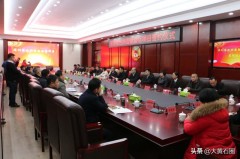
眼下,北方多地已经开始集中供暖。15日,北京正式启动2020年至2021年采暖季居民供热工作,居民家中室温须达到18℃标准。
每年一到“北方人得瑟,南方人哆嗦”的冬季,南北方的供暖差异就会成为热议的话题:一边直呼“屋里太热”,一边自嘲“取暖靠抖”。供暖前后的差异成为网友们快乐的源泉,网上也经常流传着相似的段子和表情包:
“你在北方的暖气里四季如春,我在南方的晴空下冻成冰棍。”
“北方的冬天是物理攻击,南方的冬天是化学攻击。”

Beijing turned on the city's central heating system on Monday, a relief for those ready to brace the plunge in temperatures expected in the coming weeks.
Every year, after the date marked the "Start of Winter" in the country's 24 solar terms, northern cities gradually kick off their heating seasons. The period also sees a new round of topics mixed with jokes and memes on social media, comparing the temperatures in northern and southern areas of China.
"You are enjoying the spring-like winter with the heating system in the North, while I'm turning into a popsicle even with the sunshine in the South," said one comment that is typical on social media platforms.
“南北”是如何划定的?
What defines North and South?

A structure built on Huaihe River marking the geographic line dividing northern and southern areas of China, in Huai'an City, Jiangsu Province. /CGTN
说到南北供暖差异,就不得不提到“南北供暖线”。
“秦岭-淮河线”被认为是中国南北方的自然分界线。除了这个“身份”,它还是我国800毫米等降水量线、1月份0℃等温线、温带季风与亚热带季风气候分界线……上世纪50年代,它又成为了南北供暖分界线。当时按照有关规定,我国只在累年月平均气温稳定低于或等于5℃超过90天的地区实行集中供暖。
但近年来,南方地区多次经历“凛冬”,长江沿岸居民深知被湿冷支配的恐惧。随着南方供暖的呼声越来越高,再加上受寒潮灾害的影响,武汉、合肥和长沙等南方城市已经开始在部分住宅建筑安装集中供暖系统。
然而在一些地区,寒冷天气可能持续时间较短,导致实际供热利用率低。那么,南方适合集中供暖吗?
In terms of the debate surrounding the heating system, the North and South are divided by the Qinling-Huaihe line, which is highly overlapped with the isothermal line of zero degrees Celsius. The collective heating system is provided only in the north where the average temperature is lower than five degrees Celsius for more than 90 days.
In recent years, residents living along the Yangtze River have also been complaining about humid winters. The humidity makes people feel much colder than the real temperature. Also, since 2008, cold waves occasionally hit southern China during the winter, making the season unbearable for residents. Many then have to rely on air conditioning or electric heating.
In recent years, some cities in southern China, such as Wuhan, Hefei and Changsha, have started to install heating systems in parts of residential buildings. But a provincial central heating system will not be an easy undertaking.
In some areas, the cold weather may actually last only for a short time, resulting in low heating utilization.
So, is it possible for southern Chinese residents to secure a warm winter with a central heating system?
南方如何取暖?
How to warm the South?

以前,多数南方城市只能靠空调甚至碳炉来度过寒冬,但这既不利于节能减排,还存在安全隐患。
本月初,中国人民大学应用经济学院、国家发展与战略研究院联合发布《南方百城供暖市场:模式、潜力与影响》报告。报告建议,在南方供暖市场推广模式方面,应采取“一城一策”,以各城市自身经济水平、资源禀赋等为依据,因地制宜探索南方各城市供暖模式。
该报告通过对“秦岭-淮河”以南到长江沿线这一“夏热冬冷”地区共133个城市进行评估后发现,具有较大供暖市场发展潜力的南方城市大多位于长江中下游区域。市场潜力最大的10个城市分别为:上海、南京、苏州、无锡、杭州、合肥、镇江、常州、武汉和宁波。
数据显示,2019年,家用暖气片销量同比增长430%。报告估计,到2030年,南方供暖系统或将拉动至少3.3万亿元的投资。
国务院发展研究中心研究员周宏春指出,供暖应当和中国的发展阶段相结合。他不主张按照地理带划分,而是按照人民的需求提供供暖服务。
In the past, most southern Chinese cities had to rely on air conditioners or even carbon furnaces, which were considered a waste of energy as well as a security risk. As voices increase for the South to install heating systems, the question remains as to how do the residents in the South keep warm during winter.
A report on the modes, potential and influences of the southern cities' heating system was published in early November. Researchers from institutions like the School of Applied Economics and the National Academy of Development and Strategy of the Renmin University argued in the report that in southern China, each city should put forward its own heating system recommendation.
Unlike northern cities which rely on the municipal administrations, many cities in the South have allowed companies to play the leading role in providing heating. Subsidies enjoyed by many northern cities should not be provided for the south, the report said. Instead, the southern cities could set up subsidies for companies providing eco-friendly and energy-saving heating systems, and encourage providers to use clean energy.
According to the report which studied the heating systems in 133 cities in the South, many have already shown strong potential in the heating market.
Most of the cities with the largest potential demand are located along the middle and lower reaches of the Yangtze River, including Shanghai, Nanjing, Suzhou, Hangzhou, Hefei, Zhenjiang, Changzhou, Wuhan and Ningbo.
In 2019, data showed that the sales volume of Chinese household heating units had increased by 430 percent, with Shanghai, Nanjing and Wuhan taking the lead. The report predicts that by 2030, the heating system in the South could draw at least 3.3 trillion yuan ($500 million) in investment.
Zhou Hongchun, a researcher at the Development Research Center of the State Council, said that it was no longer suitable to install heating systems only along geographic lines. The process should be in accordance with the needs of the people, he said.

The standardized temperature for the heating season is 18 degrees Celsius in Beijing this year. /CGTN
目前,北京、黑龙江、辽宁、天津和河北等地区已经在探索智慧供暖的应用,智慧供暖可有效减少能源浪费,保证室内外合理温差。
家住北京的潘女士说,经过改造,她再也不会因为冷热不均发愁。这套智能系统的工作原理是:通过在居民户内加装室温采集器,自动收集室温数据,再根据当前户外天气情况等因素,通过精准测算,得出各楼宇所需的供水温度,自动下达指令调节每个单元楼口处供热管网的阀门压力、流量,使之达到各区域热量分配平衡,精准调控室温。
中国建筑节能协会城镇智慧供热专业委员会秘书长周志刚表示,智慧供暖的应用仍处于初级阶段,但随着新基建、智慧城市的推荐,相信这项工程在未来几年将迎来发展期。

The renovated monitoring center for a heating system in Tianjin that uses gas instead of coal. /CGTN
Many also worry about the potential environmental pollution of an increase in heating systems and suggest that this matter be taken into consideration nationwide.
Intelligent heating systems have already been applied in some residential buildings in Beijing, Heilongjiang, Liaoning, Tianjin and Hebei.
Mz. Pan from Fengtai District of Beijing said that after renovations, the heating system in her home collects the interior temperature and through accurate calculation of the outdoor temperature as well, devises the ideal temperature required for the heating system. A command is sent to all the heating webs, which can automatically adjust the valve pressure and the water flow rate so as to adjust the heat in different areas, to provide a more comfortable environment for the residents.
A system like this could effectively prevent the wasting of energy, and secure a reasonable temperature gap between the indoor and outdoor environment.
"Such an intelligent heating system is still in its primary phase, and as the infrastructure and construction of intelligent cities improve, I believe it will become popular in many cities in future years," said Zhou Zhigang, secretary of China Association of Building Energy Efficiency.
,











